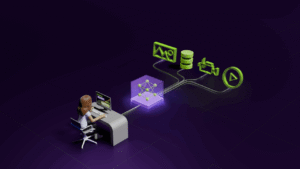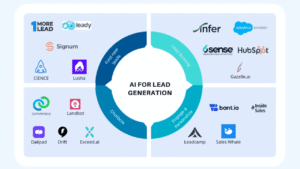Hugging Face’s Open Computer Agent—is a free, cloud‑hosted AI “computer‑using” agent that demonstrates how open‑source vision‑language models can power multi‑step workflows on a Linux VM via GUI interactions. Built on the smolagents framework and leveraging the Qwen2‑VL‑72B model for “grounding” (identifying on‑screen elements by coordinates), it can autonomously launch Firefox, navigate web pages, and execute simple tasks from natural‑language prompts. While offering a low‑cost proof of concept for agentic AI, it currently exhibits high latency, error rates on complex requests (e.g., flight searches), and CAPTCHA failures—underscoring important considerations around performance, security, and governance for enterprise adoption.
Market Context: The Rise of Agentic AI
Enterprise interest in AI agents is booming, with 65% of companies experimenting with agentic workflows and the segment forecast to grow from $7.84 billion in 2025 to $52.62 billion by 2030. Leading vendors—OpenAI (Operator), Anthropic (Claude’s Computer Use), and Google (upcoming agent prototypes)—are racing to deliver autonomous AI that can operate software interfaces, signaling a new wave of productivity‑boosting technologies for knowledge work.
Overview of Open Computer Agent
Hugging Face’s Open Computer Agent allows users to access a Linux VM preloaded with applications like Firefox via a web interface, prompting it with natural language (e.g., “Use Google Maps to find Hugging Face HQ in Paris”). The agent uses vision‑language models to locate UI elements (buttons, text fields) by coordinate, then simulates mouse clicks and keyboard input to complete tasks—a capability enabled by the grounding features in Qwen2‑VL‑72B.
Technical Architecture
-
smolagents Framework: Provides the orchestration layer, translating natural‑language prompts into action sequences and managing VM sessions.
-
Vision‑Language Model (Qwen2‑VL‑72B): Allows the agent to interpret on‑screen elements visually and interact without relying on DOM access.
-
Multi‑Hop Workflows: Under developer control via a max_uses parameter, Claude-like models can run progressive searches—refining actions based on earlier results—to handle more elaborate tasks.
Enterprise Relevance & Use Cases
-
RPA Augmentation: Test GUI‑level automation for internal dashboards—e.g., data extraction from web portals—without investing in proprietary RPA tools.
-
Digital Assistants: Pilot customer‑facing agents to handle routine inquiries via web‑based interfaces (e.g., account lookups)—freeing human agents for complex cases.
-
Proof‑of‑Concepts: Leverage the free demo to validate use case viability before building in‑house infrastructure or engaging commercial vendors.
Limitations & Risk Considerations
-
Performance & Reliability: Reports highlight sluggish response times, failures on complex tasks (flight searches), and inability to solve CAPTCHAs—indicating a need for human‑in‑the‑loop oversight.
-
Security & Privacy: Running arbitrary web actions poses risks; enterprises must sandbox sessions, implement network controls, and secure credentials to prevent data leakage.
-
Regulatory Compliance: GUI‑based agents must adhere to industry standards (e.g., HIPAA, PCI) if handling sensitive data; audit trails and session logs are essential.
Strategic Recommendations
-
Pilot Early, Safely: Deploy Open Computer Agent in a controlled sandbox for low‑risk workflows, monitoring latency and error metrics.
-
Define Governance: Establish policies for session isolation, credential management, and activity logging before any production rollout.
-
Evaluate Hybrid Models: For high‑ROI tasks, consider on‑premise or private‑cloud deployment of agent frameworks to meet SLAs and data residency requirements.
-
Monitor Market Trajectory: Track competitor offerings (Operator, Claude, Gemini) and emerging standards from NIST/ISO on agent security and identity.
Future Outlook
As vision grounding and agent frameworks mature, enterprise‑grade agents will bridge the gap between RPA and AI, enabling seamless automation of GUI tasks. Open‑source initiatives like Hugging Face’s will accelerate innovation and supply a vibrant ecosystem, complementing commercial solutions and driving broader adoption of agentic AI across business functions.







